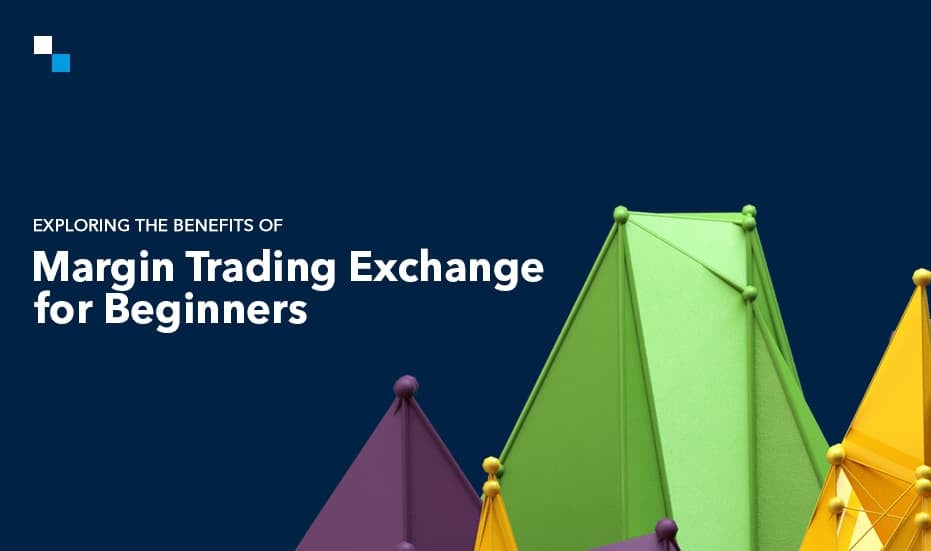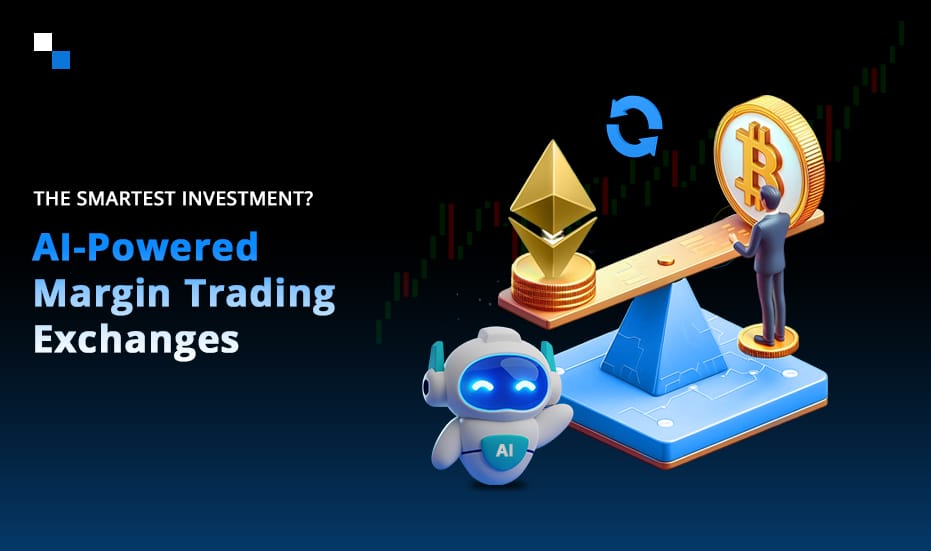
Exclusive Success Ideas For Startups Investing In Crypto Wallet in 2024
March 29, 2024
A Comprehensive Guide to Real Estate Tokenization
April 1, 2024Margin trading can be understood as a trading strategy in which an investor borrows money from a broker to buy securities. It allows traders to leverage their positions and potentially increase their profits. However, this type of trading can also result in significant losses if not executed properly. For novice traders, margin trading can be a double-edged sword. Therefore, they must leverage trading crypto exchange to stay on the safer side.
Let’s break down the key terms:
- Margin: This is the minimum amount of your own capital required to maintain a position using borrowed funds. Margin requirements vary depending on the margin trading exchange and the asset being traded. For example, a margin requirement of 20% means you need to put up 20% of the total trade value from your own funds, while the exchange lends you the remaining 80%.
- Leverage: This is the ratio between the total position value and your own capital. In the above example, with a 20% margin requirement, your leverage would be 5x (total position value / your capital). Higher leverage allows for potentially higher returns, but also magnifies potential losses.
- Margin Call: If the value of your position falls below a certain threshold (maintenance margin), the exchange will issue a margin call. This requires you to deposit additional funds to maintain the minimum margin requirement. If you fail to meet the margin call, the exchange may forcibly liquidate your position to recoup its losses, potentially leading to significant financial setbacks.
The Allure of Margin Trading for Novice Traders
On one hand, margin trading can be a tempting option for novice traders who are looking to make big profits in a short period of time. The ability to borrow money from a broker and trade with more capital than they have can be alluring. Sometimes, novice traders may become overconfident and take on excessive risk, not fully understanding the potential consequences. However, margin trading can also be a gateway for novice traders to enter the world of trading without having a significant amount of capital. This can be especially appealing for those who may not have a large amount of savings or investment funds.
The prospect of amplifying potential returns is a significant draw for novice traders. Don’t you think that having the chance to make 5x the profit on a successful trade can be incredibly tempting, especially for those seeking to grow their capital quickly? Leverage and margin trading exchange with a user-friendly interface and educational resources makes it possible even for new entrants in the financial market.
The Risks Associated with Margin Trading
1. The Pitfalls of Leverage
At the core of margin trading lies the concept of leverage, which enables traders to control larger positions than their capital would ordinarily permit. Traders can amplify their potential profits by utilizing borrowed funds, but this advantage comes with a significant caveat, i.e., the amplification of losses.
For novice traders, the lure of leveraged profits can be intoxicating, leading to overconfidence and a disregard for sound risk management practices. A single miscalculated trade can quickly erode their capital, potentially resulting in devastating financial consequences.
2. Margin Calls: A Harsh Reality
One of the most significant dangers of margin trading for beginners is the risk of margin calls. When losses on a leveraged position exceed the trader’s available margin, the broker may issue a margin call, demanding the trader to deposit additional funds or face the prospect of having their positions forcibly liquidated.
Failing to meet a margin call can be catastrophic, as the broker will close out the trader’s positions at prevailing market prices, potentially exacerbating losses. This scenario is particularly challenging for novice traders who may lack the financial resources or risk management skills to navigate such situations effectively. All they need to do is to leverage trading crypto exchange to avoid a sharp downfall.
3. The Psychological Toll
Beyond the financial risks, margin trading can also present psychological challenges for beginners. The emotional toll of substantial losses can be profound, potentially leading to impulsive decisions driven by fear or desperation.
Novice traders may be tempted to double down on losing positions, a strategy known as “averaging down,” in an attempt to recoup their losses. This approach not only compounds their predicament but also reveals a fundamental misunderstanding of risk management principles.

How Beginners Can Leverage Margin Trading Exchange to Combat the Risks?
While the world of finance offers numerous opportunities for savvy investors. This practice, which involves borrowing funds from brokers to magnify potential returns, is a double-edged sword that demands careful navigation.
Let’s explore the inherent dangers of margin trading for beginners and highlight how leveraging the resources of a reputable margin trading exchange can help mitigate these risks.
1. Educational Resources
A leverage and margin trading exchange will recognize the importance of trader education and offer a wealth of resources to help beginners navigate the complexities of margin trading. These resources may include online courses, webinars, trading guides, and tutorials covering topics such as risk management, technical analysis, and trading psychology.
By investing time in these educational offerings, novice traders can develop a comprehensive understanding of the risks involved and learn strategies to manage their positions effectively.
2. Risk Management Tools
A well-built leverage trading crypto exchange will be laced with robust risk management tools designed to help traders maintain control over their positions and limit potential losses. These tools may include stop-loss orders, which automatically close a position when it reaches a predetermined price level, and position monitoring systems that alert traders to potential margin calls or excessive leverage.
Beginners can implement strict risk management protocols by utilizing these tools, and reduce the probability of catastrophic losses and emotional decision-making.
3. Community Support
Many margin trading exchanges foster vibrant trading communities, where beginners can interact with experienced traders, ask questions, and receive mentorship. These communities can provide invaluable insights, feedback, and support, enabling novice traders to learn from the experiences of seasoned veterans.
These communities allow beginners to access trading strategies, do market analysis, and get real-time updates, which further enhances their knowledge and decision-making abilities.
4. Responsible Risk Management
Choosing the right margin trading exchange will help access valuable resources, which is crucial for beginners who want to embrace a responsible approach to risk management. This includes never trading with more leverage than they can comfortably afford to lose, implementing strict stop-loss orders, and diversifying their portfolios across different asset classes and strategies.
The Bottom Line
A leverage and margin trading exchange can be a powerful tool for experienced and novice traders. However, for novice traders, the risks associated with margin trading far outweigh the potential benefits. They must carefully use risk management tools and stay informed about the market risks before trading.
Antier, a renowned blockchain specialist can build a feature-packed margin trading exchange that meets the expectations of all categories of users, whether they are experienced traders or still learning. If you are ready to launch an exchange, let us shoulder the responsibility of completing each step of development as per your vision. Let’s build a unique platform together!



